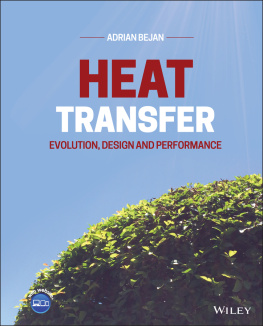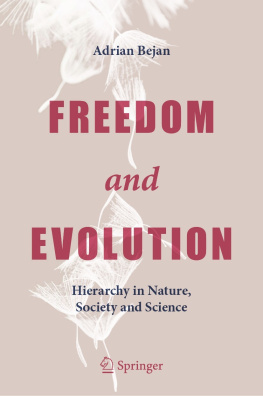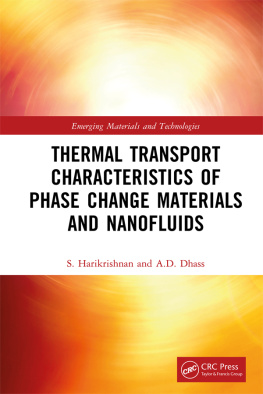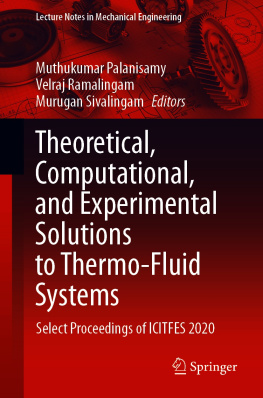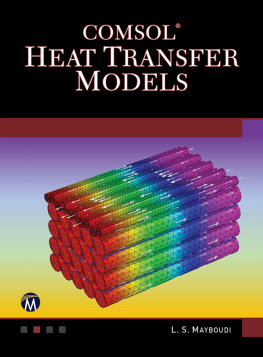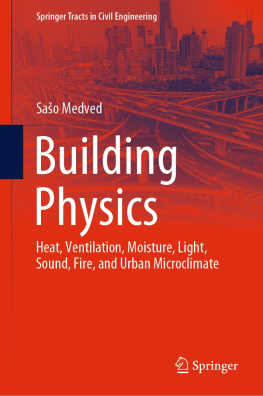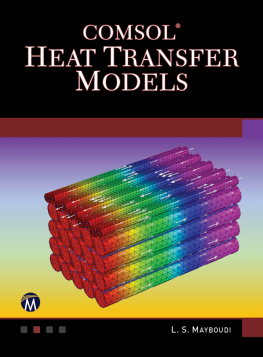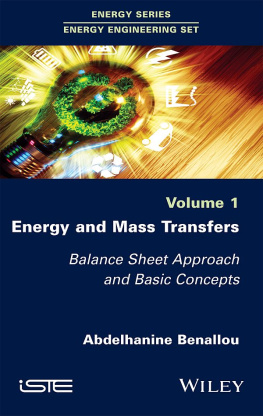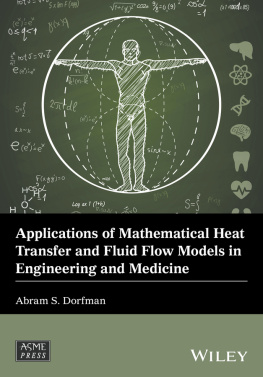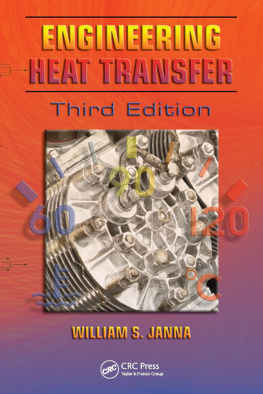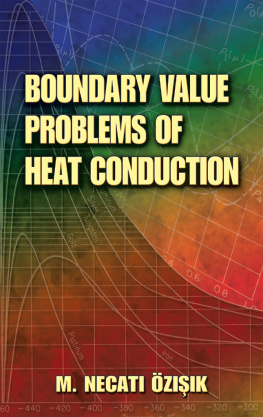Table of Contents
List of Tables
- Chapter 3
- Chapter 4
- Chapter 5
- Chapter 6
- Chapter 7
- Chapter 8
- Chapter 9
- Chapter 10
- Appendix F
List of Illustrations
- Preface
- Chapter 1
- Chapter 2
- Chapter 3
- Chapter 4
- Chapter 5
- Chapter 6
- Chapter 7
- Chapter 8
- Chapter 9
- Chapter 10
- Appendix B
- Appendix F
Guide
Pages
Other Books by Adrian Bejan
Entropy Generation Through Heat and Fluid Flow, Wiley, 1982.
Convection Heat Transfer, 1984, Wiley, Fourth Edition, 2013.
Advanced Engineering Thermodynamics, 1988, Wiley, Fourth Edition, 2016.
Convection in Porous Media, with D. A. Nield, 1992, Springer, Fifth Edition, 2017.
Heat Transfer, Wiley, 1993.
Thermal Design and Optimization, with G. Tsatsaronis and M. Moran, Wiley, 1996.
Entropy Generation Minimization, CRC Press, 1996.
Shape and Structure, from Engineering to Nature, Cambridge University Press, 2000.
Heat Transfer Handbook, with A. D. Kraus, eds., Wiley, 2003.
La loi constructale, with S. Lorente, L'Harmattan, Paris, 2005.
Constructal Theory of Social Dynamics, with G. W. Merkx, eds., Springer, 2007.
Design with Constructal Theory, with S. Lorente, Wiley, 2008.
DESIGN IN NATURE: How the Constructal Law Governs Evolution in Biology, Physics, Technology, and Social Organization, with J. P. Zane, Doubleday, 2012.
THE PHYSICS OF LIFE: The Evolution of Everything, St. Martin's Press, 2016.
FREEDOM AND EVOLUTION: Hierarchy in Nature, Society and Science, Springer Nature, 2020.
TIME AND BEAUTY: Why Time Flies and Beauty Never Dies, World Scientific, 2022.
Heat Transfer: Evolution, Design and Performance, Wiley, 2022.
Heat Transfer
Evolution, Design and Performance
Adrian Bejan
Duke University

This edition first published 2022
2022 John Wiley & Sons, Inc.
All rights reserved. No part of this publication may be reproduced, stored in a retrieval system, or transmitted, in any form or by any means, electronic, mechanical, photocopying, recording or otherwise, except as permitted by law. Advice on how to obtain permission to reuse material from this title is available at http://www.wiley.com/go/permissions.
The right of Adrian Bejan to be identified as the author of this work has been asserted in accordance with law.
Registered Office
John Wiley & Sons, Inc., 111 River Street, Hoboken, NJ 07030, USA
Editorial Office
111 River Street, Hoboken, NJ 07030, USA
For details of our global editorial offices, customer services, and more information about Wiley products visit us at www.wiley.com.
Wiley also publishes its books in a variety of electronic formats and by print-on-demand. Some content that appears in standard print versions of this book may not be available in other formats.
Limit of Liability/Disclaimer of Warranty
While the publisher and authors have used their best efforts in preparing this work, they make no representations or warranties with respect to the accuracy or completeness of the contents of this work and specifically disclaim all warranties, including without limitation any implied warranties of merchantability or fitness for a particular purpose. No warranty may be created or extended by sales representatives, written sales materials or promotional statements for this work. The fact that an organization, website, or product is referred to in this work as a citation and/or potential source of further information does not mean that the publisher and authors endorse the information or services the organization, website, or product may provide or recommendations it may make. This work is sold with the understanding that the publisher is not engaged in rendering professional services. The advice and strategies contained herein may not be suitable for your situation. You should consult with a specialist where appropriate. Further, readers should be aware that websites listed in this work may have changed or disappeared between when this work was written and when it is read. Neither the publisher nor authors shall be liable for any loss of profit or any other commercial damages, including but not limited to special, incidental, consequential, or other damages.
Library of Congress Cataloging-in-Publication Data is applied for
Hardback: 9781119467403
Cover Design: Wiley
Cover Image: Adrian Bejan
Preface
The discipline of heat transfer grew as a sequence of solved problems. From these roots the doctrine emerged as a predictive method, not as a random collection of solved problems. The first problems were the most fundamental and the simplest, and they bear the names of their creators: Fourier, Prandtl, Nusselt, Reynolds, and their contemporaries. As the field grew, the problems became more ad-hoc and applied (i.e. relevant to this, but not to that), more complicated and disunited, and much more numerous and forgettable.
Hidden in this voluminous stream are the fundamental principles that emerge. Identifying these and building with them the structure of the discipline is the main characteristic of the present book. I teach not only structure but also strategy:
The structure is drawn with sharp lines: heat transfer versus thermodynamics, conduction versus convection, convection versus radiation, external convection versus internal convection, forced convection versus natural convection, combined convection and conduction, phase change, and radiation.
The strategy is to start with the simplest method (scale analysis), and follow with more laborious and exact methods. Scale analysis is powerful because it teaches how to determine (on the back of an envelope) the proper orders of magnitude of all the physical features that matter (temperature difference, heat flux, fluid velocity, boundary layer thickness, lost power). It reveals the correct dimensionless groups, which are the fewest such numbers. With them, we learn how to predict and correlate in the most compact form the results obtained analytically, numerically, and experimentally.
This book is an idea-book that points toward the future of the discipline, in four ways:
- The relationship between configuration and performance. Traditionally, the fundamentals of heat transfer are taught by first postulating the configuration (the boundary conditions) and then solving the governing equations. The resulting solution describes the flow fields (pressure, temperature, velocity) and the currents that flow on these fields in the assumed configuration. The solution permits the calculation of global features such as pressure drop and heat transfer rate, which are important in practice.
The key word is describe. How these features affect the desired performance of the greater installation that uses that configuration is another matter. Addressed even less is how to discover the flow configuration in the first place. This is the new point of view from which this book teaches thermal sciences. It teaches how configuration affects performance, and how to configure the flows such that performance is enhanced. It establishes performance and evolution (the freedom to change) as fundamental concepts in thermal sciences.
- New configurations are being developed, adopted, and joined by new arrivals. This is the universal phenomenon of evolution as physics, bio and non bio, which includes technology evolution. Chief among the growing population of designs are the tree-shaped vasculatures that bathe entire areas and volumes. They are transforming the field of smart, high-density and multi-functional materials, and bringing them close to animal design. This book shows how principles of physics such as the constructal law predict a future with more degrees of freedom, economies of scale, multi-scale design, vascularization, and hierarchical distribution of many small features among the few large features.

